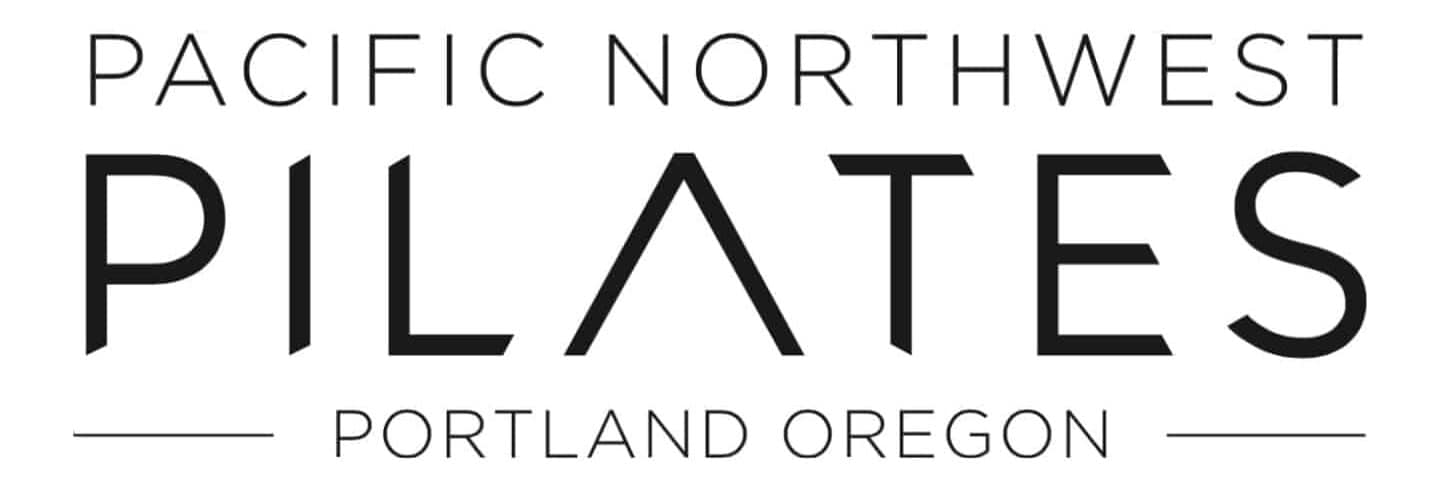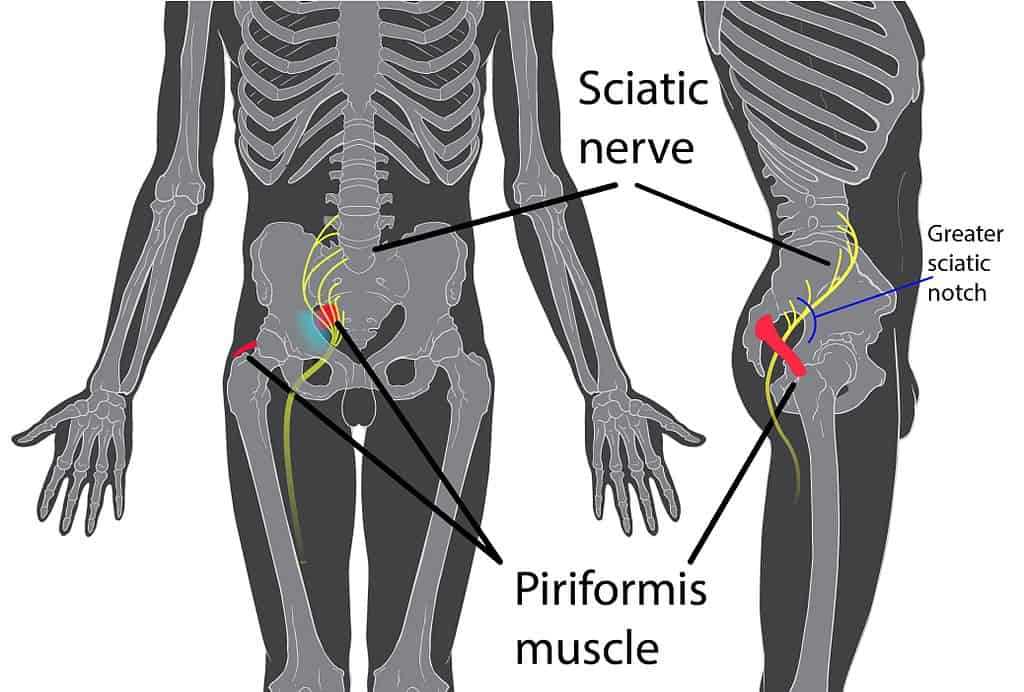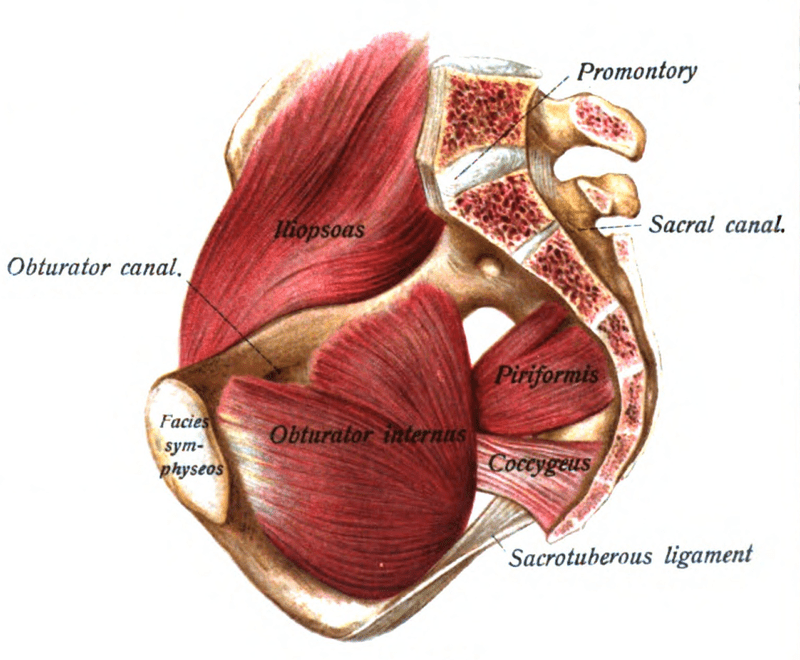People with a history of lower back pain, SIJ instability, sciatic nerve pain or piriformis syndrome may come to Pilates to seek support. In this blog, we take a look at the anatomy of the piriformis, common exercise misconceptions, and how to consider and develop a safe and effective Pilates program to restore balance and support for the piriformis and all the deep muscles of the hip. Though we’re shining a spotlight on the piriformis, keep in mind that no muscle works in isolation and an instructor should always find ways to integrate or re-integrate movement through the entire body.

Anatomy Made Simple
1 It may look like a carrot to you, but a Flemish anatomist believed the flat muscle looked like a pear—the “piri” in the word “piriformis” references its pear shape.
2 It originates on the anterior surface of the lateral edge of the sacrum and inserts into the greater trochanter of the femur.
3 One of the six deep muscles on the back of the pelvis, the piriformis works in tandem with the quadratus femoris, obturatur externus, obturatur internus, gemellus superior and gemellus inferior.
4 When the hip is extended, the piriformis laterally rotates the femur in the hip socket.
5 When the hip is flexed to 90 degrees, the piriformis abducts the femur at the hip and reverses its primary function—it internally rotates the hip when the hip is flexed at 90 degrees or more. (Netter’s Clinical Anatomy, 2010)
Aha! It’s a sensory study moment.Follow your spine with your fingers down to your sacrum. Find the outside edge of this flat bone with one hand and place the other hand just behind the top of your thigh bone. Your piriformis links these two points.
The Perfect Precision Muscle
In a healthy body, the piriformis muscles (you have two) integrate load through the pelvis, connecting the sacrum and the greater trochanter of the femur. They enable mobility while also providing stability and are essential to load transfer throughout the entire body.
The piriformis is a precision muscle that aids in daily and repetitive movement—standing on one leg, transferring weight from one leg to the other when you walk and swinging your leg open to get out of a chair are all ways that the piriformis assists to create and regulate functional movement required from the hip.
An overused or misused piriformis is perceived by the brain and nervous system as tight or shortened. Your clients will be persuaded to stretch. They may ask you for Pilates options to scratch their misinformed stretching itch.
Press the Pilates pause button. Remember, perceived tightness and restriction are caused by a variety of issues. Consider the whole picture before you stretch.
1 Do you see asymmetries in the pelvis, hip and rib cage? Imbalance may affect the function of the piriformis.
2 How does the spine align? Issues that result in nerve pain may affect the piriformis.
3 Take a look at the feet. Both pronation and supination can create changes up the entire chain of the leg and alter the demands placed on the piriformis.
4 Zero in on the musculature around the piriformis. Overused hamstrings and improper gluteal firing—a persistent squeeze around the sit-bones—can be the result of inhibition and a piriformis that works all the time or is out-of-sync with surrounding muscles. Misfiring of muscles within the hip place an unhealthy pull on the piriformis. This can also be cause by pelvic rotation including torque within the pelvis.
5 Think in three-dimensions. Irregularities within the hip can happen on one side or both. Piriformis pain on one side is often in response to issues on the opposite side.
Pilates pro pointer! Remember, a piriformis that is tight, chronically engaged or lengthened can start to affect the sciatic nerve. An irritated sciatic nerve can become fastened down and unable to glide. Be safe. If a client is experiencing nerve pain down their leg, suspend exercise and refer them to a health professional.
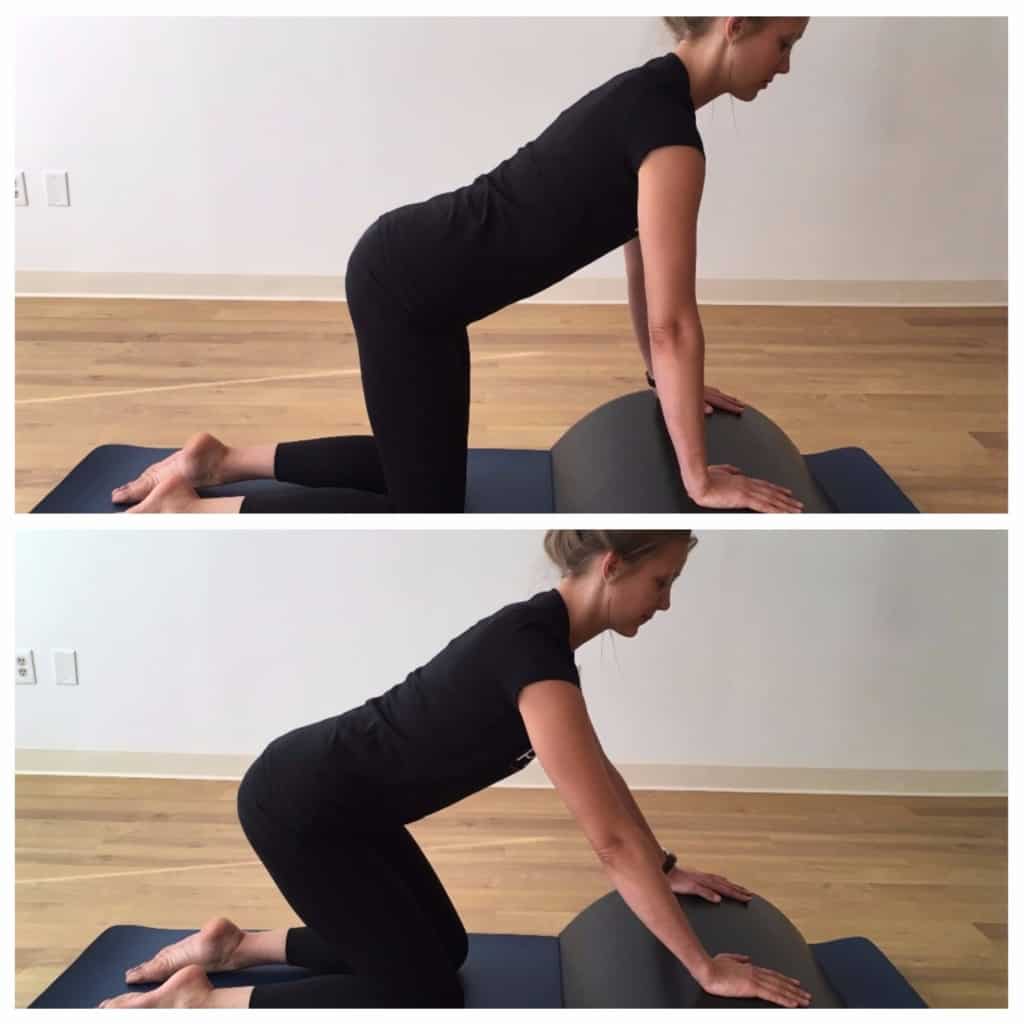
Top Pilates Priorities
1 Stop the grip & open the hip—restore balance around the hip socket with exercises including 4-point rock back, and one leg circle with a bent knee, using a flex band around the thigh.
2 Align the spine—fundamental Pilates exercises like Spinal Rotation, Mermaid and Cat Stretch are great exercises to help realign the thorax and pelvis. Good alignment up the chain will load the piriformis correctly, and since the sciatic nerve originates from the venral rami of spinal nerves L4- S3, integrating spinal alignment with good hip mechanics is very important.
3 Focus on the feet—rigid or floppy feet will force the piriformis to work incorrectly. Exercises as Ankle Exercise on the stability chair and Footwork on the reformer or stability chair can help restore the open and closed chain actions of the feet with the piriformis in different positions.
4 Center the Hip—side lying is a good way to center the hip and encourage better balance of the muscles around the hip. Frequently, the TFL (tensor fascia latae) and rectus femoris will not be working in balance with adductors, deep hip stabilizers including the piriformis and glutes.
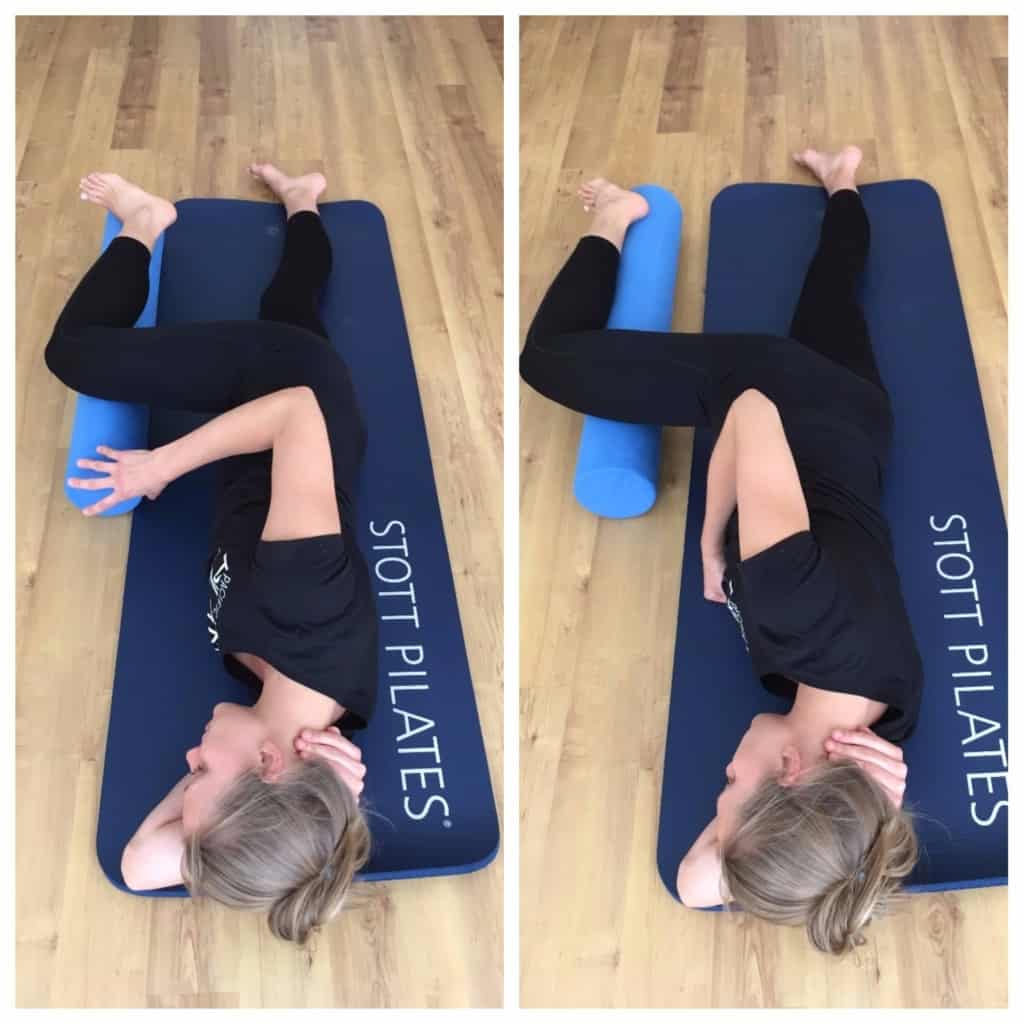
5 Get the glutes going—the gluteals are the power. The piriformis and the deep rotators are the precision. Shoulder Bridge Prep focuses on the proper alignment. Watch for perfect form—a client who likes to squeeze the hamstrings and deregard the glutes will likely have a difficult time with this exercise. Slowly progress to marching in this position.
6 Progress for the perfect piriformis—over time progress to Pilates exercises like Feet in Straps, Side Splits, Leg Pull Front and Side Leg Lift series. Develop endurance, strength, balance reactions, and plyometrics.
Well-educated Pilates instructors stay in-tuned to the complexity of human movement and bio-mechanics. Want to teach well-informed, mindful, safe and effective Pilates programs for clients or patients in a variety of settings? You’ve found a special place and partner in your health, well-being and education. Call us today.
Pacific NW Pilates is studio, school and fitness family under one roof. Click to learn more about our education courses and workshops, private studio sessions and group classes. Or call for details: (503) 292-4409.
